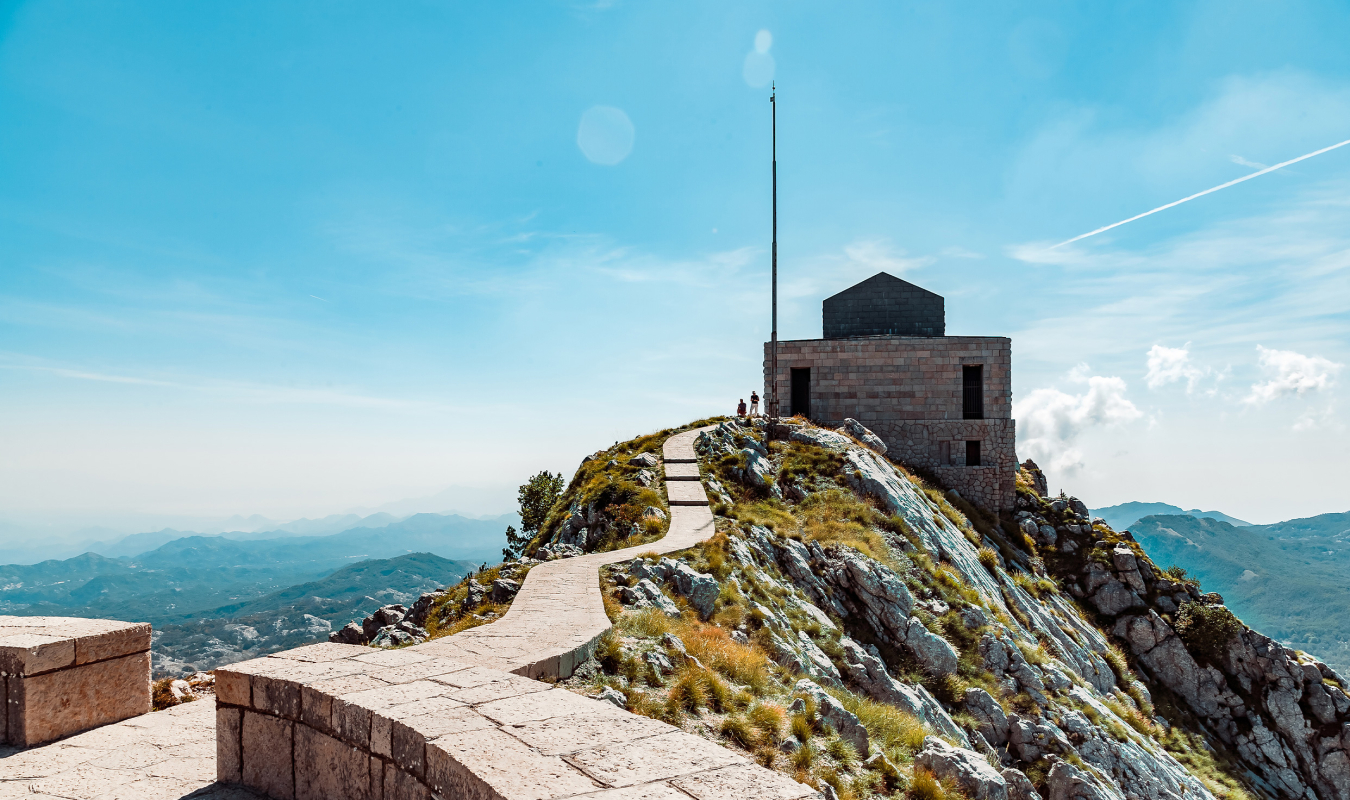Njegoš's mausoleum is located in the Lovćen National Park, on Jezerski vrh (1,657 m), the second highest peak of the Lovćen mountain. It is dedicated to Peter II Petrovic Njegos. It was built according to the idea of the Croatian sculptor Ivan Meštrović. From Cetinje to the mausoleum there is an asphalt road in the length of 21 km. A staircase with 461 steps leads to the mausoleum, which passes through a tunnel broken into the Lovćen massif. The old chapel, Njegoš's votive church, was located on Jezerski vrh, on the mountain Lovćen. The church-chapel, dedicated to St. Peter of Cetinje, was built according to his idea by Petar II Petrović Njegoš, in 1845, with the wish that he be buried in it. The mausoleum was erected on the place where the chapel used to be - Njegoš's votive church. The church was shelled in both world wars and finally demolished in 1974, despite the opposition of the Metropolitan and Orthodox believers, and today's mausoleum was built in its place. Due to the fear that the Turks might desecrate the grave, Njegoš was buried in the Cetinje monastery, and on August 27, 1855, his bones were transferred to Lovćen. Prince Danilo fulfilled the bequest to rest in it, taking Njegoš's remains to Jezerski vrh with the most prominent Montenegrins. Jezerski vrh was the target of the Turks first, and during the First World War, in 1916, the Austro-Hungarian army razed it to the ground, bombing it from the Bay of Kotor. After the war, the church was renovated and consecrated again on September 12, 1925. The chapel was demolished in 1972, and in 1974, today's Njegoš mausoleum was built in its place.

 Go back to blog
Go back to blog
